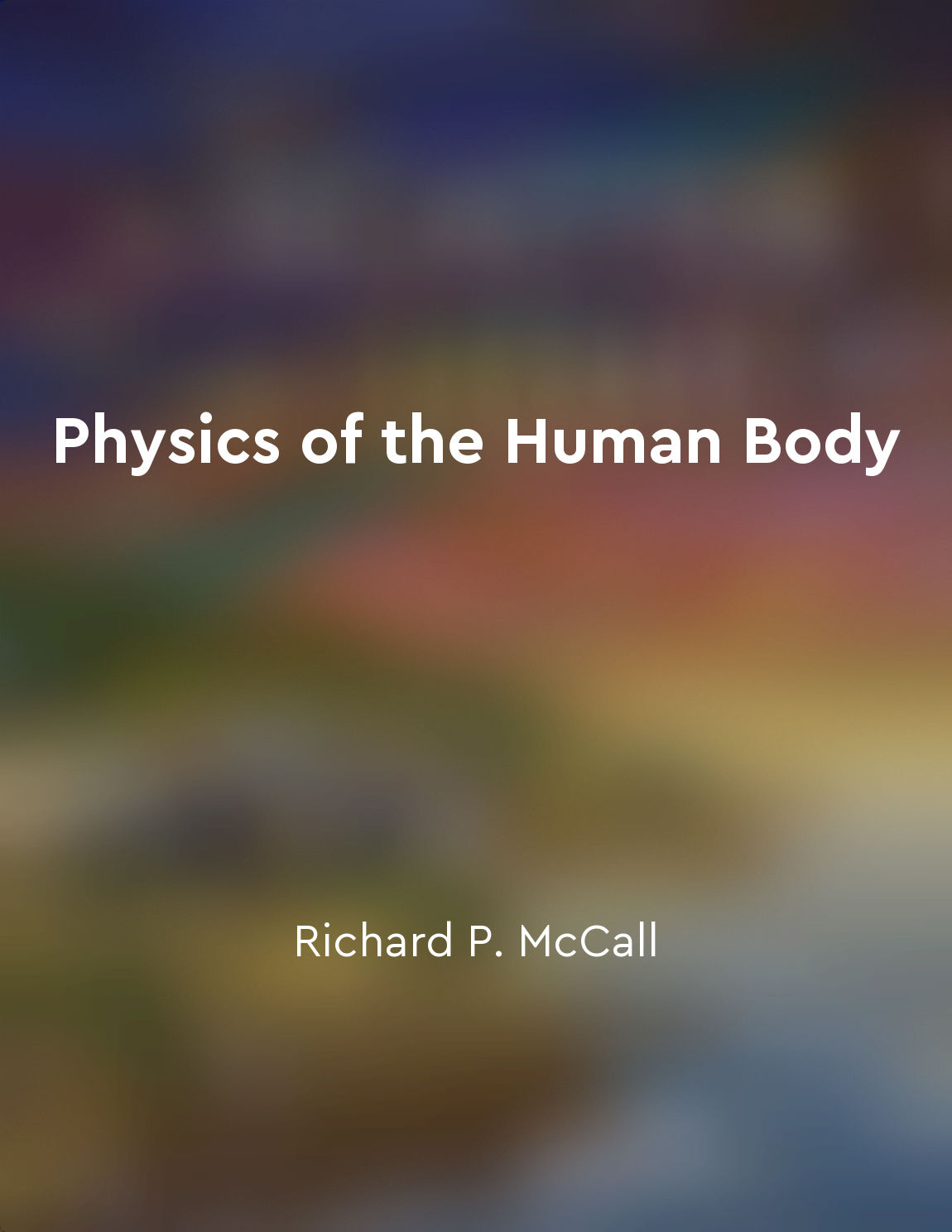Movement relies on the interactions of muscles and joints from "summary" of Physics of the Human Body by Richard P. McCall
The coordination of movement in the human body is a complex process that involves the interaction of muscles and joints. Muscles are tissues that contract and relax to produce movement, while joints are the connections between bones that allow for movement to occur. Together, muscles and joints work in harmony to enable the body to perform a wide range of activities, from walking and running to lifting and grasping.
When a muscle contracts, it pulls on the bones to which it is attached, causing movement at the joint. For example, when the biceps muscle in the upper arm contracts, it pulls on the radius bone in the forearm, bending the elbow joint. Similarly, when the quadriceps muscle in the thigh contracts, it extends the knee joint, allowing the leg to straighten. In this way, the muscles and joints of the body work together to produce coordinated movement.
The interactions of muscles and joints are governed by the principles of physics. One of the key principles at play is Newton's third law of motion, which states that for every action, there is an equal and opposite reaction. In the context of movement, this means that when a muscle contracts to produce a force, there is a corresponding force exerted by the joint in the opposite direction. This interplay of forces allows for smooth and efficient movement of the body.
Another important concept in understanding movement is the idea of leverage. Leverage is the ability of a force to produce rotation around a fixed point, or fulcrum. In the human body, joints act as fulcrums, and muscles exert forces to produce movement around these pivot points. For example, the elbow joint serves as a fulcrum for the biceps muscle to produce flexion of the forearm.
In addition to muscles and joints, movement in the human body is also influenced by other factors such as gravity, friction, and inertia. These external forces can impact the way in which muscles and joints interact to produce movement. For example, when walking uphill, the force of gravity pulls the body downward, requiring the muscles to work harder to overcome this resistance.The concept that movement relies on the interactions of muscles and joints is a fundamental principle in understanding how the human body functions. By studying the physics of movement, we can gain insights into the intricate mechanisms that allow us to perform everyday activities with ease and efficiency.

Open in app
The road to your goals is in your pocket! Download the Oter App to continue reading your Microbooks from anywhere, anytime.


